18.07.2017
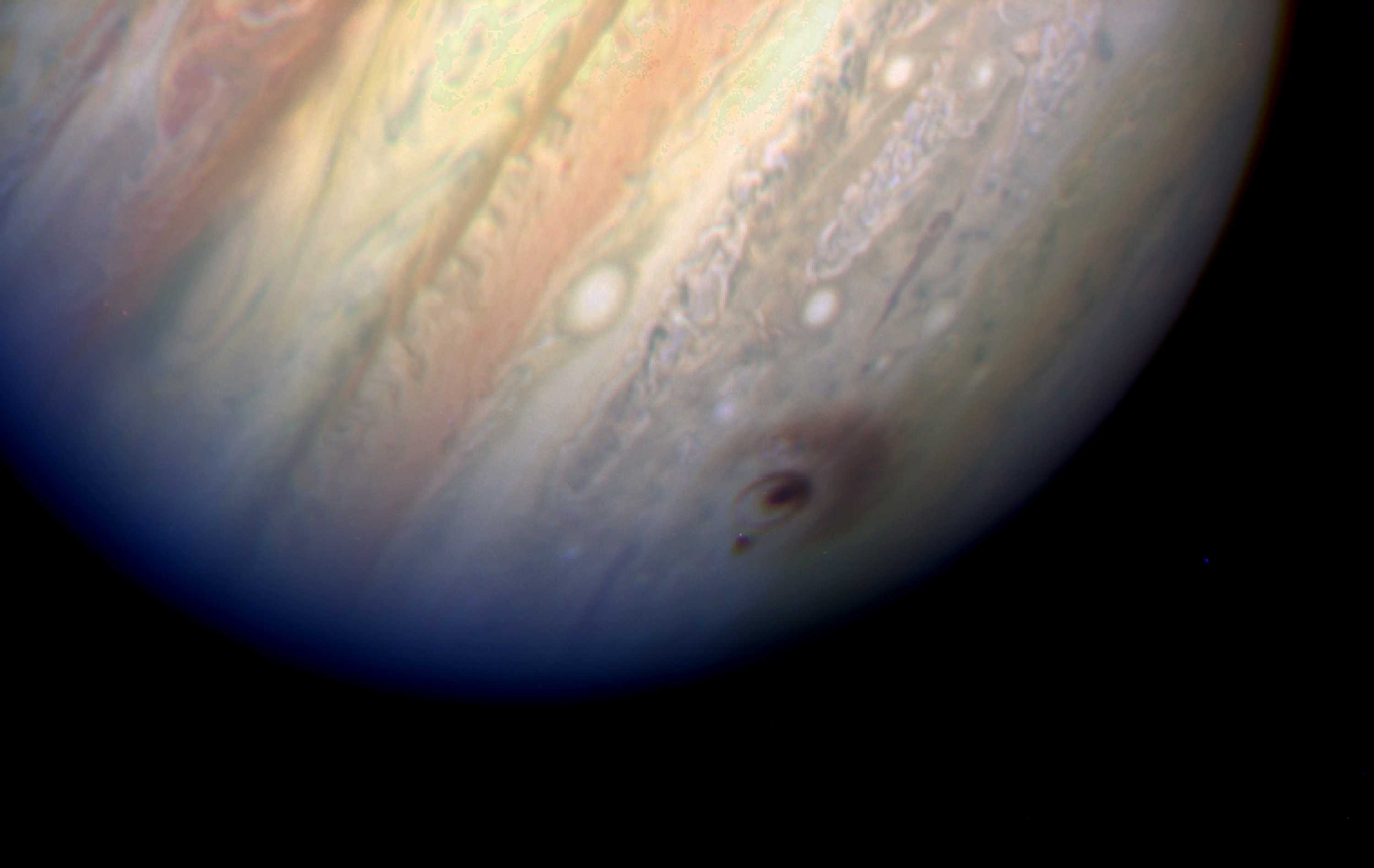
View of Jupiter from the Hubble Space Telescope after the impact of one of the largest fragments from Comet Shoemaker-Levy 9 in 1994. Photo Credit: NASA/STScI
Jupiter has been in the news a lot lately, with the Juno spacecraft continuing to send back stunning new images of the largest planet in the Solar System, including close-ups of the Great Red Spot. But something else happened at this time 23 years ago which captured astronomers’ and the public’s attention – a huge explosion in Jupiter’s atmosphere as a comet broke apart and the fragments collided with the planet, plummeting into the deep, thick atmosphere. The impacts and resulting “scars” were observed by telescopes around the world.
The collision created a spectacular show, easily observed by both large observatories and smaller telescopes alike. Comet Shoemaker-Levy 9 had first been captured by Jupiter’s gravity about 20-30 years earlier, and in July 1994 finally came too close to the planet and was broken apart into multiple fragments which then collided with the planet one after another. The first impact was on July 16, 1994; the resulting explosions were equivalent to 6,000,000 megatons of TNT, producing a fireball larger than Earth, with a temperature of about 24,000 K. A total of 21 impacts were seen over the next six days. The largest impact, from fragment G, created a huge dark spot over 7,456 miles (12,000 kilometers) across, and released an enormous amount of energy – equivalent to 6,000,000 megatons of TNT (600 times the total nuclear arsenal of the world at the time). After the largest impacts, powerful shock waves were observed in the atmosphere moving at speeds of 1,476 feet/second (450 meters/second).
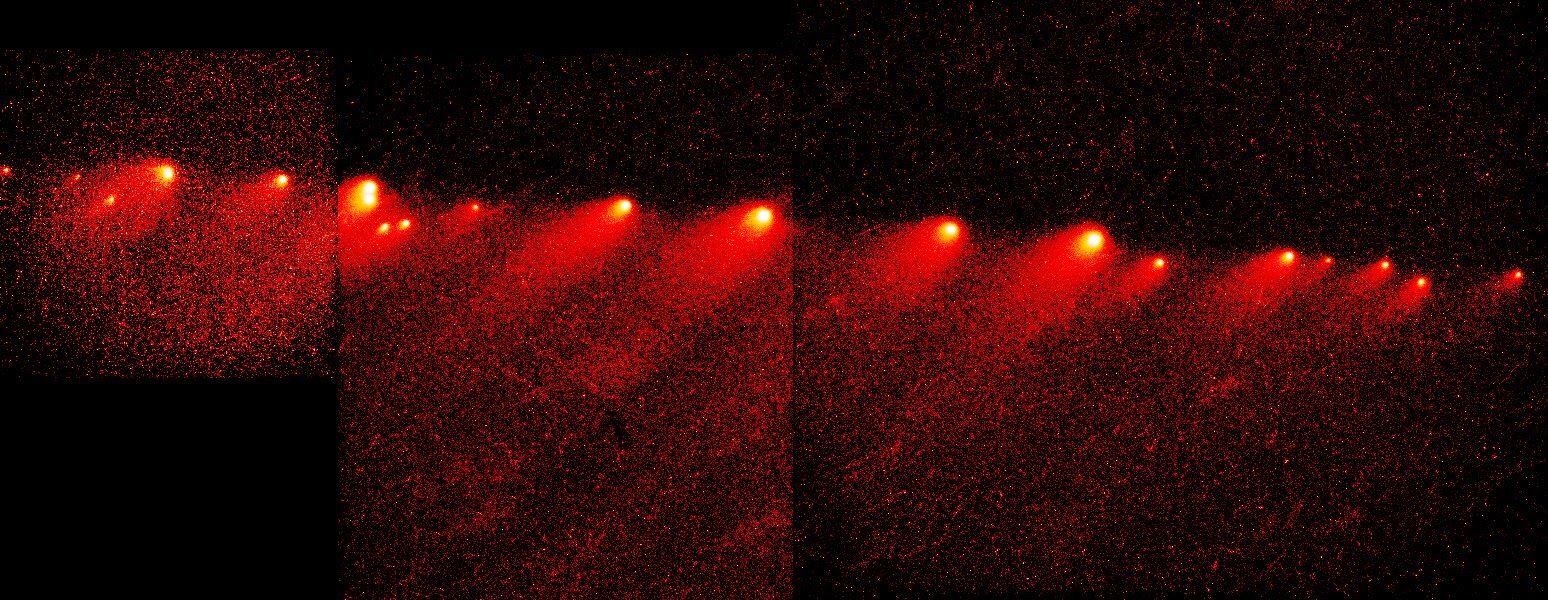
Composite image showing the fragments of Comet Shoemaker-Levy 9 as seen by the Hubble Space Telescope. Image Credit: NASA/STScI/H.A. Weaver/T.E. Smith
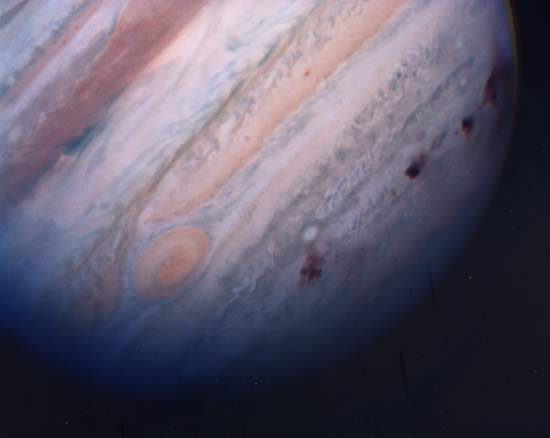
Multiple dark “bruises” in Jupiter’s atmosphere from the cometary impacts. Photo Credit: NASA/Hubble Space Telescope Comet Team
The dark “bruises” on Jupiter eventually faded away, but they provided a unique opportunity for scientists to learn more about the composition of Jupiter’s atmosphere.
Right now, NASA’s Juno spacecraft is orbiting Jupiter, and although it hasn’t (yet) observed any similar impacts, it has been studying the planet in unprecedented detail. Most recently, it has sent back the closest-ever images of the Great Red Spot, the massive storm system larger than Earth which has been raging for centuries, if not longer.
“For generations people from all over the world and all walks of life have marveled over the Great Red Spot,” said Scott Bolton, principal investigator of Juno from the Southwest Research Institute in San Antonio. “Now we are finally going to see what this storm looks like up close and personal.”
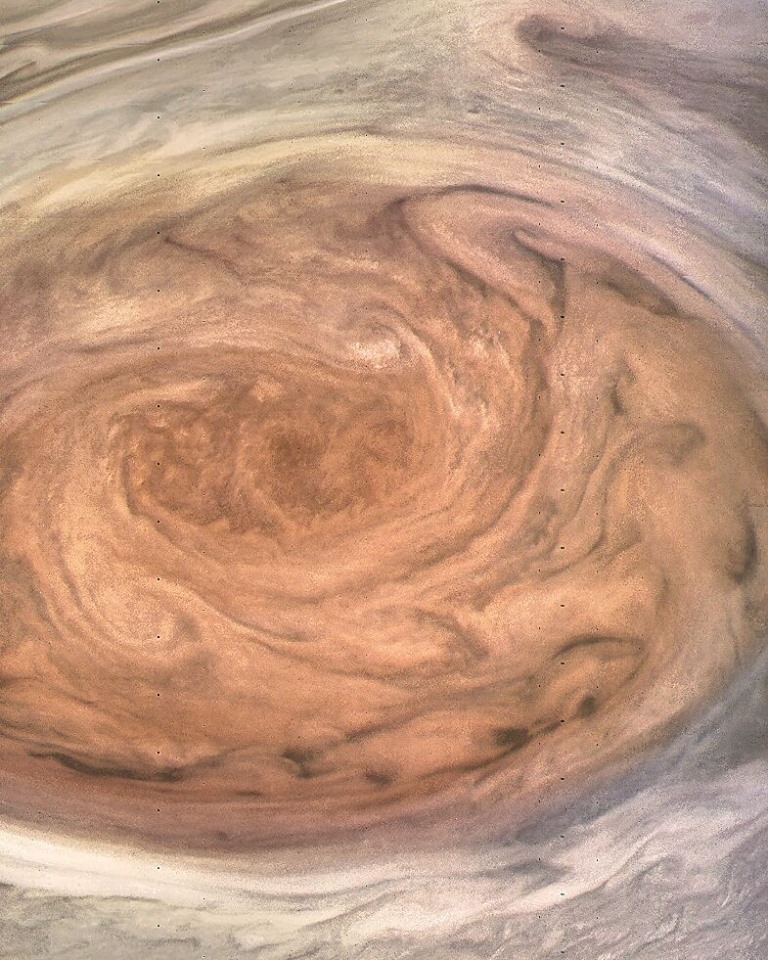
The closest-ever view so far of Jupiter’s Great Red Spot, seen by the Juno spacecraft on July 10, 2017. Image Credit: NASA/JPL-Caltech/MSSS/SwRI/Kevin M. Gill
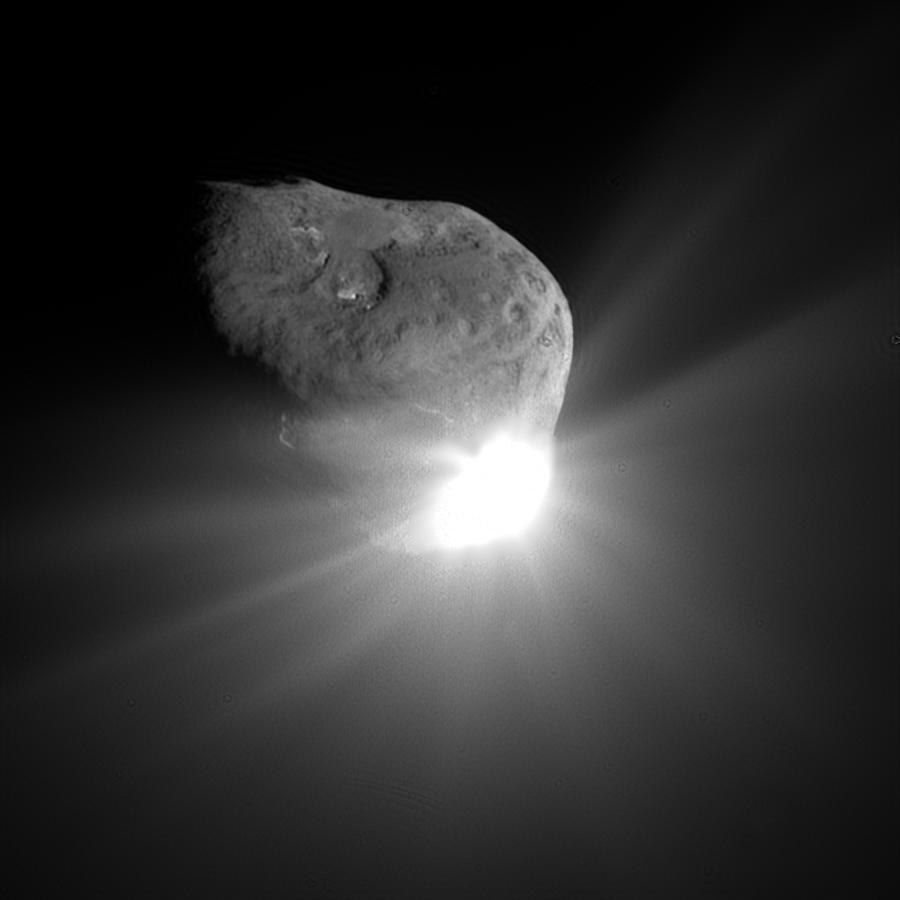
A different kind of cometary collision: spectacular image of Comet Tempel-1 taken 67 seconds after it obliterated Deep Impact’s impactor probe in 2005. Photo Credit: NASA/JPL-Caltech/UMD
“We are excited to share these early discoveries, which help us better understand what makes Jupiter so fascinating,” said Diane Brown, Juno program executive at NASA Headquarters in Washington. “It was a long trip to get to Jupiter, but these first results already demonstrate it was well worth the journey.”
Quelle: AS
